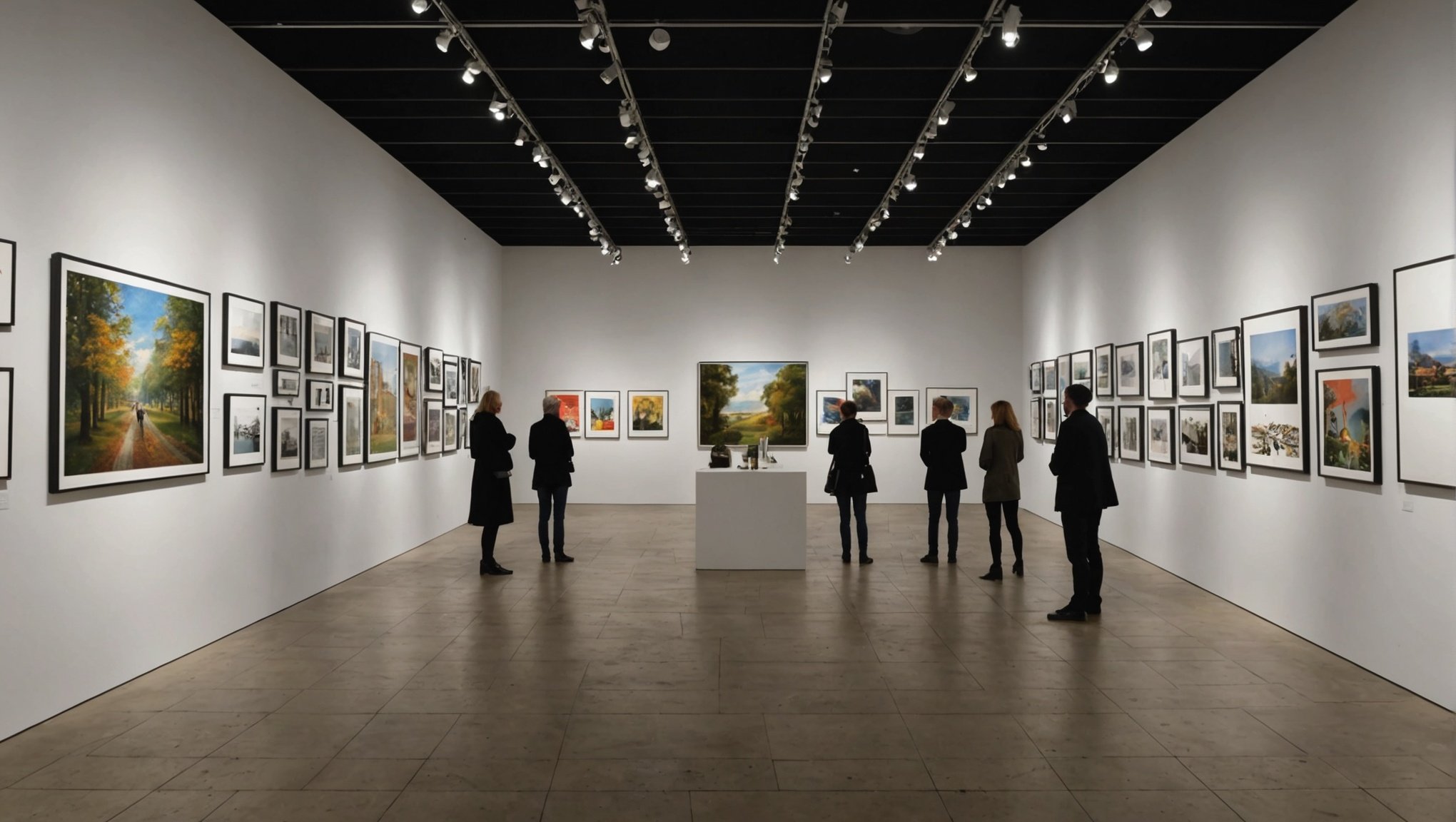Unlocking Creativity: Top Strategies for UK Art Exhibitions to Leverage YouTube for Dynamic Virtual Tours
In the ever-evolving world of art and technology, UK art exhibitions are finding innovative ways to engage their audience and expand their reach. One of the most effective strategies is leveraging YouTube to create dynamic virtual tours. Here’s how art exhibitions can harness the power of YouTube to enhance their creative content and connect with a broader audience.
The Power of YouTube in the Art World
YouTube has become an indispensable platform for content creators, including those in the art world. With its vast user base and advanced features, it offers a unique opportunity for art exhibitions to showcase their work in a creative and engaging manner.
In parallel : Crafting Your Narrative: A Guide for UK Small Breweries to Leverage Blogging for Brand Storytelling
Reaching a Global Audience
YouTube allows art exhibitions to transcend geographical boundaries, reaching a global audience that might not have been possible through physical visits alone. For instance, the Raleigh Kids Art Gallery, while focused on local events, can use YouTube to share their creative projects and inspire young artists worldwide[4].
Enhancing Visual Content
The platform’s emphasis on visual content makes it ideal for art exhibitions. High-quality videos can provide a detailed and immersive experience, allowing viewers to explore artworks up close and personal. This is particularly beneficial for exhibitions that incorporate complex or interactive pieces, such as the surrealist dioramas at the Raleigh Kids Art Gallery’s “Through the Looking Glass” event[4].
Also to see : Maximizing Engagement: A Guide for UK Interior Design Showrooms to Host Virtual Tours on Instagram Live
Creating Engaging Virtual Tours
To create engaging virtual tours, art exhibitions need to focus on several key strategies.
Detailed Walkthroughs
A thorough walkthrough of the exhibition is essential. This can include a narrator providing context about the artworks, artists, and the themes of the exhibition. For example, Claire Waite Brown’s “Creativity Found” podcast often features in-depth interviews with artists, which could be adapted into video walkthroughs to provide a similar level of insight[1].
High-Quality Videography
Investing in high-quality videography is crucial. This includes using professional equipment, ensuring good lighting, and editing the footage to make it visually appealing. A videography editor with experience in capturing art exhibitions can make a significant difference in the final product.
Interactive Elements
Incorporating interactive elements can enhance the viewer’s experience. This could include 360-degree views, augmented reality (AR) features, or even virtual reality (VR) experiences. For instance, using AR to provide additional information about the artworks or allowing viewers to zoom in on specific details can make the tour more engaging.
Building a Community Through YouTube
YouTube is not just a platform for showcasing content; it is also a powerful tool for building a community.
Consistent Content Creation
Consistency is key when it comes to content creation on YouTube. Regular uploads keep the audience engaged and coming back for more. This could include weekly or monthly updates, behind-the-scenes footage, or even live streams from the exhibition.
Engaging with Viewers
Interacting with viewers is vital for building a community. Responding to comments, answering questions, and incorporating feedback into future content can help create a loyal following. Sandra Sallin, in her conversation with Peg Fitzpatrick, highlights the importance of authentic connections and community engagement, which can be applied to art exhibitions as well[5].
Collaborating with Content Creators
Collaborating with content creators can bring a fresh perspective and new ideas to your virtual tours.
Partnering with Influencers
Partnering with social media influencers or YouTube creators who have a following in the art world can help increase the visibility of your exhibition. These influencers can share their own experiences and insights, making the content more relatable and engaging.
Featuring Artist Interviews
Featuring interviews with the artists themselves can provide valuable insights into their creative process and the meaning behind their works. This can be seen in the “Creativity Found” podcast, where Claire Waite Brown interviews various artists about their journeys and creative outlets[1].
Practical Tips for Creating Effective Virtual Tours
Here are some practical tips to help you create effective virtual tours:
Pre-Production Planning
- Define Your Objective: Clearly determine what you want to achieve with your virtual tour. Is it to educate, entertain, or both?
- Script and Storyboard: Plan out your script and storyboard to ensure a smooth and cohesive narrative.
- Choose the Right Equipment: Invest in good quality cameras, microphones, and lighting to ensure your video looks professional.
During Production
- Capture High-Quality Footage: Use multiple angles and close-ups to capture the details of the artworks.
- Conduct Interviews: Interview artists, curators, or other relevant individuals to provide context and insights.
- Use Time-Lapse and Chroma Key: Use time-lapse to show the setup of the exhibition or chroma key to add interactive elements.
Post-Production Editing
- Edit for Engagement: Edit your footage to keep it engaging and concise. Use music, transitions, and other editing techniques to enhance the visual appeal.
- Add Subtitles and Captions: Add subtitles and captions to make the content more accessible and to provide additional information.
- Optimize for SEO: Optimize your video for YouTube SEO by using relevant keywords, tags, and descriptions.
Example of a Successful Virtual Tour
Here is an example of how a virtual tour could be structured:
| Section | Description | Duration |
|---|---|---|
| Introduction | Welcome and introduction to the exhibition | 2 minutes |
| Walkthrough | Detailed walkthrough of the exhibition with narration | 10 minutes |
| Artist Interviews | Interviews with featured artists about their works | 5 minutes |
| Interactive Elements | AR features or 360-degree views of specific artworks | 3 minutes |
| Behind-the-Scenes | Footage of the exhibition setup and preparation | 4 minutes |
| Conclusion | Summary and call to action to visit the physical exhibition | 2 minutes |
Quotes and Insights from Experts
- Claire Waite Brown: “Creativity can be found at any age, and it’s about embracing the journey and not being afraid to try new things.”[1]
- Sandra Sallin: “Building authentic connections with your audience is crucial. It’s about being genuine and engaging in a way that resonates with people.”[5]
- Peg Fitzpatrick: “Consistency is key when it comes to content creation. Regular uploads keep your audience engaged and coming back for more.”[5]
Leveraging YouTube for dynamic virtual tours is a powerful strategy for UK art exhibitions to enhance their creative content and connect with a broader audience. By focusing on detailed walkthroughs, high-quality videography, interactive elements, and community engagement, exhibitions can create engaging and informative content. Collaborating with content creators and following practical tips for pre-production, production, and post-production can further enhance the quality and impact of these virtual tours. As the world becomes increasingly digital, embracing technology and creativity can help art exhibitions thrive in this new landscape.











